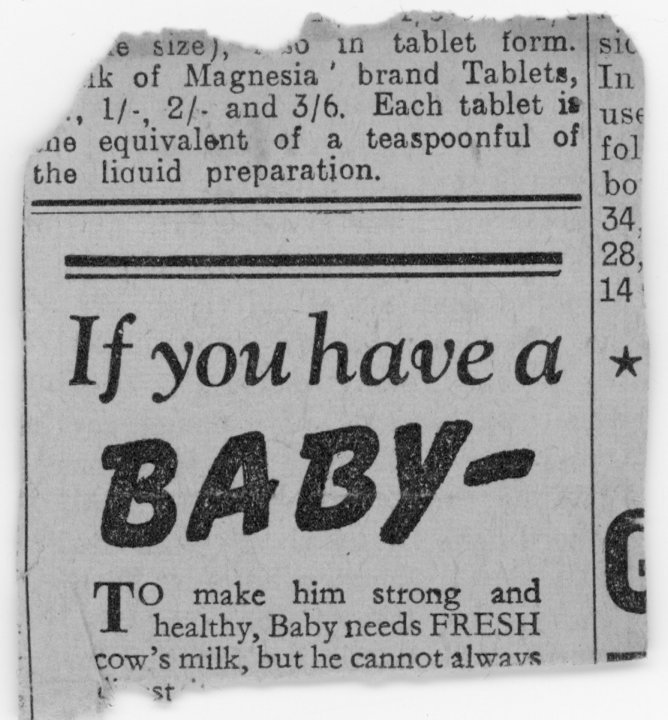Exercise 4: Archival intervention
Look through your own family archive and try to discover a series of portraits (four or five) that have existed within this archive, but have never been placed together before. The portraits can contain individuals or even couples; they may span generations, or just be of the same person throughout the years(chronotype). Whichever way you wish to tackle this exercise, there must be a reason or justification for your choices. What message are you trying to get across about these portraits?
Through doing this exercise, you are physically bringing together portraits that have never been viewed as a series prior to your intervention. Therefore, you need to think really clearly about what your choices are and who you decide to select.
You can either make physical copies of the originals and work with these in your learning log, or re-photograph them digitally (or scan) and post them on your blog. Either way, your thoughts about these portraits will be the key to this exercise. Try to articulate what is happening when you bring these images together for the first time. Apart from the obvious – the subject, perhaps – is there anything else that links the imagery together? The location? Dates? Activities?
Moving back to Annette Kuhn again here, think about any inscriptions that might be made on the imagery, detailing whom these inscriptions might have been for, in terms of perhaps owning the memory evoked by the image. In relation to one of her own family portraits, Kuhn describes a caption written by her mother, stating:
“This power-play was an attempt by her mother to force other memories into line with her own. Her mother was pinning the moment the photograph was taken of her daughter to an event that had happened in her own life. Her mother thus literally ‘writes’ herself into the picture (although not being present in it literally), by trying to claim the right to define the memories evoked by it, she is thus attempting to dictate the memory to the viewer.”
Kuhn, A. Family Secrets: Acts of Memory and Imagination (2002) London: Verso. Pg 17-18.
Write 500–800 words reflecting on this exercise and include it in your
learning log or blog.
‘R.D. Laing wrote that the family may be imagined as a web, a flower, a tomb, a prison, a castle… He thought of the family as a site of multiple possibilities, as something that goes beyond the image we have of the idealized family. It can be a network of hidden secrets and denied dreams, a dysfunctional site of addiction, neglect and control (as was the case with the famed psychiatrist’s own family), or it can be a place where you go for comfort and love.’ (https://www.magnumphotos.com/arts-culture/society-arts-culture/we-are-family/ accessed 30/12/2022)
It was a bit presumptuous by the author of this exercise to assume that everyone has a family album or archive, neatly preserved and available for all to dip into-or that one would want to. I grew up in a family ‘war-zone’, and not much was recorded let alone survived. When my Mum died three years ago, my sister gathered whatever photos she could find and stored them in a plastic bag. The bag is slim pickings, but those photographs that survive provide clues and context to my family’s history, to my history, or as Annette Kuhn in Family Secrets observes,
“the past is like the science of a crime: if the deed itself is irrecoverable, its traces may still remain. From these traces, markers that point towards a past presence,to something that has happened in this place, a (re)construction, if not a simulacrum, of the events can be pieced together'”(Kuhn 2002:4)
As I sifted through the photographs, I experienced a lot of emotions. People, places and things reached out from the past demanding an explanation, but the nature of photographs leaves us with more questions than answers. By arranging the photos from my small archive, I began to see things, patterns I’d never considered before. I always had experienced and considered my mother as an extremely unhappy person, especially when growing up. Ours was not a happy house, and fights between mum and dad were common. Mum would rage at things a child could never understand, and she would take out her frustrations on her children.
However, looking at the photographs, I began to see another side to her. I saw a young woman enjoying life. She seemed so happy, and it left me confused. Who is this woman in the photos? What happened in her life that she ended up so unhappy? The images were all taken between 1950 and 1968. I chose these images to bring a selection of her apparent happiness into one place, to help me unpack a side of her life I saw very little of (while growing up anyway). But they are not resolved. They serve only to bear witness that she was once happy at a certain moment in time. I have no idea what came before or after to have changed her. I can guess though as I was part of the ‘web of associations’ in her life. The last photograph in the series gives us a clue-its of my Mum and Dad and my grandmother (on Dad’s side). Grandma Farrell was the matriarch and ruled over a family of 5 boys and one girl. Mum never got on with her and resented that Dad went to visit her every Thursday right up till she passed away in 1985. My suspicion is that she was behind a lot of the unhappiness and whatever dynamic existed between them was not positive.
In the plastic bag of photographs that serves as my archive, I also found an envelope with a small cutting from a newspaper, on one side is an extract from some political article and on the other in bold capital letters is “If you have a baby-. For this mini-series, it serves to give it a title.
Moving back to Annette Kuhn again here, think about any inscriptions that might be made on the imagery, detailing whom these inscriptions might have been for, in terms of perhaps owning the memory evoked by the image.
The hardest part has been coming up with a caption for each image. The ones I’ve included would have been written by my mother to project an image of ideal family life. In image archive6, I imagine she would have wanted the image to be about her new son and shift focus away from my grandmother who was an ever-contentious character in her marriage. While considering the captions, I was reminded of the malleability of photographs and John Berger when he says,
“in itself, the photograph cannot lie, but, by the same token, it cannot tell the truth; or rather, the truth it does tell, the truth it can by itself defend, is a limited one.'”(Berger, 2013: 70)
What this tells me is that although photographs are malleable and captions are part of that malleability, in the case of my family archive, the ‘radiating web of associations’ also drive their meanings and impact. I look at the images, taken for the most part as family snaps, capturing a moment, deposited in a bag, and all I have is my memories, historical (family), family stories and myths, and with the photographs at hand, try to extract meaning or deal with the emotions they trigger.
“An image, images, or memories are at the centre of a radiating web of associations, reflections, and interpretations” (Kuhn 2002:5)
References
Berger,John, 2013, Understanding a Photograph,London, Penguin Classics
Clarke,Graham, 1997, The Photograph, New York, Oxford University Press
Kuhn, Annette, 2002, Family Secrets , Acts of Memory and Imagination, London,Verso
Pantal,Colin, 2022, We are Family, Magnum Photos.Com, https://www.magnumphotos.com/arts-culture/society-arts-culture/we-are-family/


